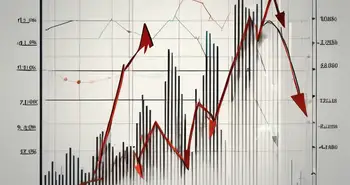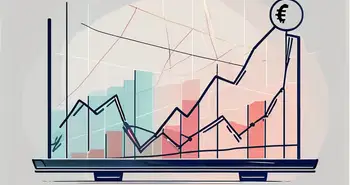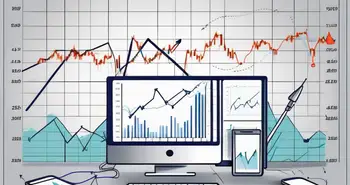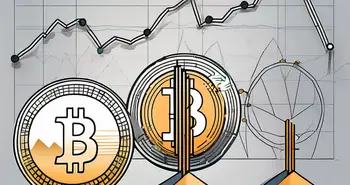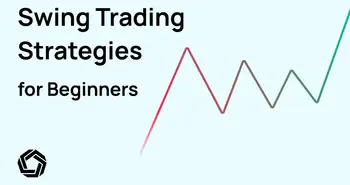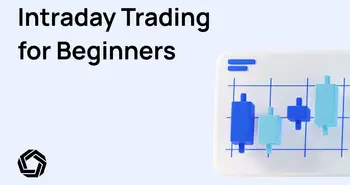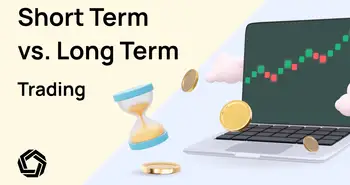Swing Trading vs Scalping: Which Is Better?
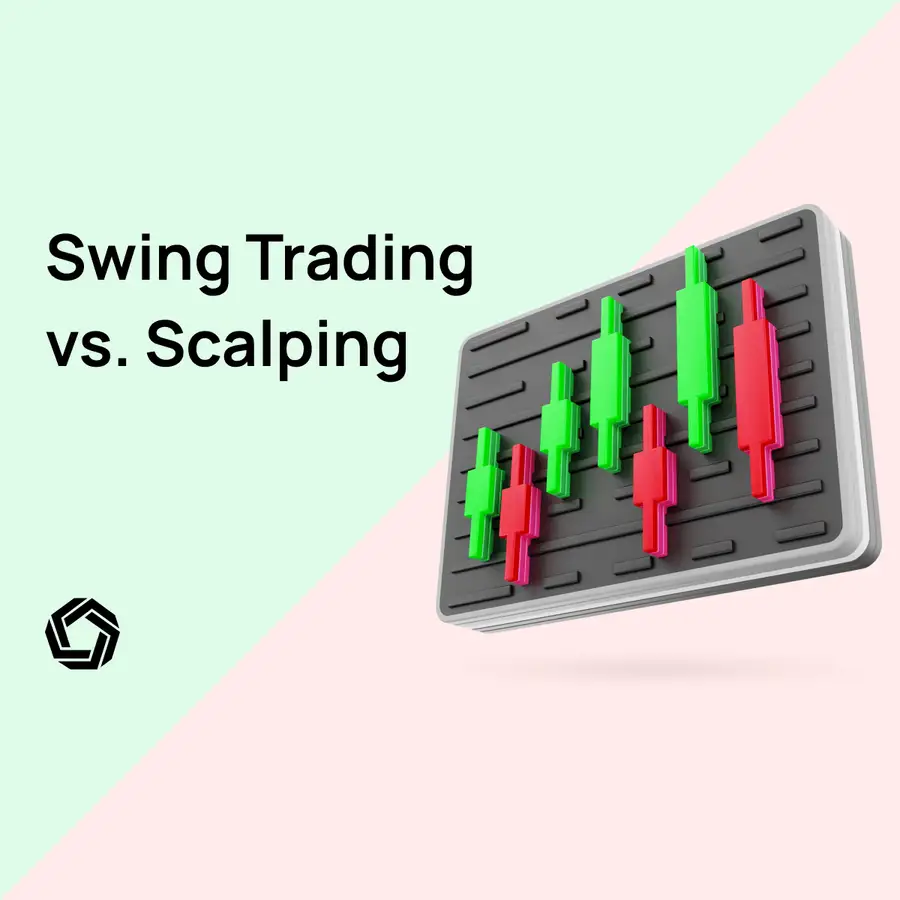
This article describes and contrasts two popular trading styles among stock, commodity, cryptocurrencies, and forex traders: swing trading and scalp trading (“scalping”). Swing trading and scalping represent two short-term trading methods that are practiced to generate profits based on price movements.
Provided below is an overview of each trading method, allowing you to learn the differences between swing and scalp trading. These concise explanations and descriptions will provide you with a better idea as to which trading strategy best suits your personal goals, your risk tolerance, and your commitment level.
Swing Trading Definition
Markets move in cycles where asset prices fluctuate up and down based on a variety of different factors. Swing traders try to predict the pricing “swings” within these market cycles. These pricing swings may occur over either a few days or a few weeks.
Swing trading involves trades that are shorter-term than long-term investing but longer-term than intraday investing. And, generally speaking, swing traders earn higher profit margins based on fewer transactions than intraday traders.
For example, a swing trader might look to generate profits from a $10 stock price increase that materializes over a period of several trading days. In contrast, an intraday trader may seek to profit from a 20-cent stock price increase within just a matter of a couple of hours.
Swing trading is a shorter-term strategy that combines technical analysis with fundamental analysis in order to gauge the best trade entries and exits. Technical analysis involves analyzing past price movements to make an informed decision as to potential future price movements.
Indicators that help inform swing traders as to potential future price movements include trend, momentum, volatility, and volume indicators. Typical trading time charts on which swing traders rely include four-hour charts (4H) and daily charts (D1).
Fundamental analysis is a trading discipline that scrutinizes a stock’s underlying business fundamentals and financial metrics rather than its historical pricing data points. Company performance metrics commonly relied upon to perform fundamental analysis include earnings per share (EPS), the price-to-earnings ratio (P/E), the price-to-book ratio (P/B), and return on equity (ROE).
There are quite a few different strategies that swing traders typically employ. Some of the more popular swing trading strategies include utilizing support and resistance levels, analyzing moving averages (i.e., Exponential Moving Averages), and employing Fibonacci retracement patterns.
Scalping Definition
Scalp trading involves making a larger number of trades, with the short-term goal of earning small profits on each trade. Scalping is a subset of intraday trading. But while an average intraday trading trader might buy a stock when the market opens at 9:00 am and then exit this position within a few hours, scalpers usually look to be in and out of their trades within a matter of minutes – sometimes even within a matter of seconds.
Here is an example. Let’s say a scalper enters a limit order to buy 2,000 shares of ABC Inc. at a price of $0.98. If the price is hovering around $ 1.00 and then abruptly drops to $0.98, the trade is executed. The trader will then immediately begin diligently monitoring the price action for any incremental movement, such as by way of real-time price charts or 1-minute price bar charts.
Five minutes after executing this trade, let’s say the stock increases to $1.02. The scalper’s overall position has now increased from $1,960 to $2,040. The trader quickly closes the trade for an $80 gain, regardless if the price movement continues to increase.
The scalper makes $80 profit in this five-minute time period and then moves on to the next trade. And the next trade may involve another ABC Inc. trade. Indeed, scalpers often trade the same security over and over again throughout a single trading session, especially on volatile days. Just know, scalping and swing trading can also earn profits the other way, for example by going short on bitcoin.
Swing Trading Advantages and Disadvantages
Swing Trading Advantages
Swing traders have the potential to earn greater profits than other types of traders. For example, swing traders typically earn more than scalp traders because swing traders are not repeatedly looking to earn small trading profits. Rather, highly profitable swing traders consistently earn profits of anywhere from 5-30% over the course of a year.
Another swing trading advantage is that it is emotionally less taxing than other types of trading, such as intraday trading. With intraday trading, traders are tethered to their trading monitors and the markets, monitoring minute-by-minute price movements. Intraday traders must always be on the alert to execute their next trade quickly and efficiently. This of course can lead to heightened levels of stress and anxiety. And during trading sessions, these heightened levels rarely subside, starting from the opening bell and continuing non-stop to the closing bell.
Swing trading is less stressful. By entering a position and establishing a stop-loss order, swing trading allows traders to enter a trade and “forget about it”. Thereby freeing up time to concentrate on other daily activities.
In addition, swing trading is extremely popular among novice traders as it is a rather straightforward trading technique. With this trading technique, traders are not required to engage in a deep dive of fundamental analysis to establish an asset’s intrinsic value. Rather, swing traders tend to rely upon technical analysis indicators to concentrate their trading efforts primarily on an asset’s price and volume.
Swing Trading Disadvantages
Like other trading strategies, swing trading has a number of disadvantages.
For example, swing traders leave their trades open for a longer period of time. Such open trades are susceptible to after-hours risk based on overnight and/or weekend price movements. Therefore, with open swing trades, traders are more susceptible to potential losses based on negative earnings reports or other market news that may arise either between business days or over a weekend.
And these open-ended trade risks are even more prevalent in markets that are always open, such as the 24/7 cryptocurrency market. Therefore, because the crypto market never sleeps, any open trades are subject to potential negative reports or news that arise at any time of day, any day of the week.
Swing trading over a period of days and sometimes weeks also requires the outlay of capital. As such, this capital must be tied up for a certain period of time, sometimes for a couple of days. And sometimes this capital must be tied up for a couple of weeks. To go along with this longer capital outlay period, swing traders must possess a greater amount of patience so that their trades can eventually develop and move over time in the desired direction.
In contrast, scalpers enter and exit smaller trades continuously, sometimes spontaneously throughout the trading session. Therefore, scalpers are not required to tie up large amounts of capital for what can be lengthy periods of time.
Another disadvantage of swing trading is the difficulty in consistently getting the correct market timing. Swing traders enter certain positions and then close out that position after a certain period of time, like a few days or even a few weeks. But sometimes swing traders will close out a trading position prematurely. That is, a trader may exit a long position even though that trading position may continue to go long even after exit. In such a situation, the swing traders may miss a continued opportunity to earn additional profit based on such continued long-term opportunities.
Scalping Advantages and Disadvantages
Another short-term trading strategy is referred to as “scalping.” In contrast to swing traders who may initiate one or two trades over a period of a couple of days or weeks, scalping traders can make multiple trades per minute, or even make multiple trades just seconds apart. Indeed, certain active scalpers can initiate hundreds of trades over the span of one trading session. In a sense, scalpers operate as swing traders in hyperdrive since they are looking to continuously capitalize on immediate potential price swings.
In some volatile markets, such as with certain cryptocurrencies, skilled scalpers will target smaller price fluctuations. This can result in the trader earning smaller but many times repetitive profits. The key to being a skilled scalper is the speed of trade execution and the consistency of profits. Delays, hesitancy, and lagging internet speeds will result in ineffective trading and lost profits.
Below, a number of scalping advantages and disadvantages are summarized.
Scalping Advantages
Scalping can generate short-term profits. Provided, of course, that the trader actually makes consistent, profitable trades. Unlike position trading or even swing trading, scalpers are not locked into positions for a long period of time, thereby tying up capital for long periods of time.
Smaller trades mean lower potential profits but smaller trades also mean lower risk. It is unlikely that scalpers will get rekt – break the bank – when scalping. This is normally true as the scalper’s position size will be comparatively smaller than it would be if the scalper were swing trading, or using a different trading strategy.
Another primary advantage of scalping is the generation of minute or small but consistent profits. For some scalpers, generating consistently smaller profits over a period of time can lead to substantial gains earned while also minimizing potential losses.
Scalping is also advantageous as it requires a lower capital outlay than swing trading. This is true since scalping trades are smaller and remain open for only short periods of time.
The fast pace trading environment of scalping can be a fostering training ground to learn the ins and outs of trading. Due to the fast-paced nature of trade identification, entry, and exiting that goes along with scalping, traders must quickly develop a working foundation of trading. Traders who have honed their scalp trading skills will find it easier to understand and implement other types of trading strategies.
Scalping Disadvantages
One of the downsides to scalping is that earned profits per trade are often minimal. This is one reason why scalpers need to increase the number of their trades to make it worth their while. And while small profits can add up over time, it can be a tedious process for the more profit-driven trader.
Scalping, being a fast-paced trading strategy, can be emotionally more taxing than other types of trading. Scalpers must be glued to their trading monitors so that they can continuously monitor markets for minute-by-minute price action.
They must always be on the alert and stand ready to execute their next trade quickly and efficiently, creating increased levels of stress and anxiety. And during trading sessions, these heightened levels rarely subside, starting from the opening bell and continuing non-stop to the closing bell.
Scalping also requires an ideal work environment, one devoid of distractions. Such a work environment includes a zero-lag internet connection and real-time access to market data allowing for smooth, error-free trade placement and execution. Any order entry or exit complication can prove to be a disaster, thereby leading to unprofitable trades. Moreover, frequently trading on certain platforms can lead to increased trading fees, eating into potential profits.
Swing Trading or Scalping: Which to Choose?
Interested in becoming either a swing trader or scalper? If so, it is important to choose a trading strategy that aligns with your trading objectives, your time allocation, and your risk tolerance, especially when you want to grow a small trading account.
First, identify your risk and reward objectives. Do you desire to make one or two big-time trades that can potentially pay off handsomely? Or, are you ok with making smaller, more frequent trades that have the potential of earning smaller earnings but at the same time reducing the overall risk of greater losses? If the former, swing trading might be for you. If the latter, check out becoming a scalping trader.
Second, determine how much time and energy you can commit to your future trading endeavors. If you are looking at supplementing your primary income stream and only have limited time to dedicate to trading, becoming a prolific scalper is probably not in the cards for you. You might be better off trying out swing trading. With swing trading, you will not have to monitor your trades minute-by-minute. Rather, you can enter a trade and then circle back to monitoring your pending trade after a day or two.
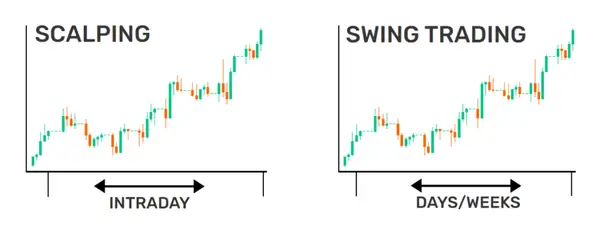
In contrast, scalping is a full-time job, requiring a full-time commitment. Successful scalpers must monitor the markets continually, always trying to identify the next trading opportunities during each trading session. Aiming to enter – and quickly exit – trades after earning just a small profit means that scalpers must vigilantly monitor asset price action, quickly and intelligently conduct analysis, and monitor trades and trading opportunities throughout each trading session. Scalpers cannot take time off if the market remains open.
For swing traders, trading is usually not their primary “occupation.” Swing trading does not require continual monitoring of trading positions, like scalping. Under certain conditions, swing traders might spend just an hour or so at the beginning or end of each trading session checking the status of their trades and adjusting stop-loss orders or profit targets.
Therefore, swing traders generally view their trading activity as a source of extra income, supplementing full-time employment elsewhere. In contrast, scalpers are typically reliant on their trading activity as providing a primary income source.
And finally, when evaluating whether you want to spend time swing trading or scalping, be realistic as to your skill set. Do you have the intellectual fortitude, concentration, and patience to monitor incremental price movements that occur in minutes or seconds and can you make decisive financial decisions based on these movements? If so, you might be cut out for scalping. If not, scalping might not be a good fit for you.
Alternatively, if you are interested in participating in trading that takes place over the course of days or weeks and you do not mind having capital locked for longer periods of time, swing trading might be a better option. There is less stress and less time involved, making it far more trader-friendly for novice traders.
Conclusion
Scalping or swing trading? The answer to this question really comes down to what is the best trading style for you based on your objectives and risk tolerance. Can you devote a fair amount of time monitoring markets on a minute-by-minute basis every working day of the week in the hopes of earning multiple small profits, albeit with minimal risk? Then try scalping. Alternatively, if your objective is to earn higher profits while basing trading decisions on market movements over days or weeks and not minute-by-minute, swing trading could be your thing.
PS: If you are still on the lookout for more strategies, you might get more insight from the best investing books.

Disclaimer: All investments involve risk, and the past performance of a security, industry, sector, market, financial product, trading strategy, or individual’s trading does not guarantee future results or returns. Investors are fully responsible for any investment decisions they make. Such decisions should be based solely on an evaluation of their financial circumstances, investment objectives, risk tolerance, and liquidity needs. This post does not constitute investment advice.

Painless trading for everyone
Hundreds of markets all in one place - Apple, Bitcoin, Gold, Watches, NFTs, Sneakers and so much more.

Painless trading for everyone
Hundreds of markets all in one place - Apple, Bitcoin, Gold, Watches, NFTs, Sneakers and so much more.

